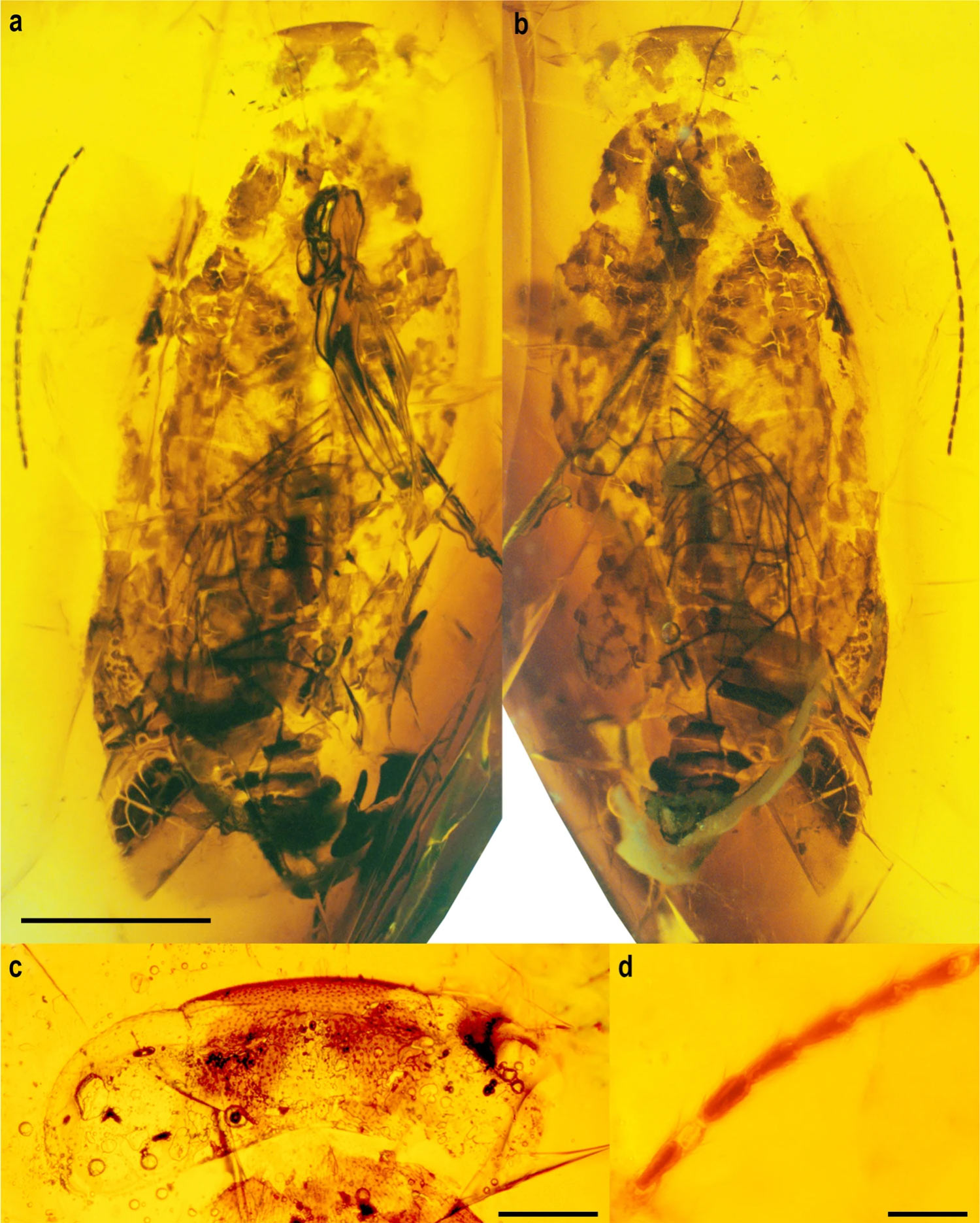Alienopterix santonicus was found preserved in a piece of ajkaite, a unique Late Cretaceous type of amber from western Hungary.
“Cockroaches are one of the most dominant insect orders in Paleozoic and Mesozoic ecosystems,” said Márton Szabó, a paleontologist at the Hungarian Natural History Museum and ELTE Eötvös Loránd University, and his colleagues.
“Appearing in the Late Carboniferous, they are considered as ancestors of termites, mantises and chresmodids.”
“In the course of their 320 million-year-long evolution, cockroaches adapted to a wide range of ecosystems and developed a high degree of ecological, behavioral and morphological diversity.”
“During the course of their evolution, there are now aquatic, pollinating, decomposing, jumping, mimicking, camouflaging, translucent, aposematic, parasitic, predatory, poisonous, eusocial, virus infection-symptomatic, holoptic, pectinate and bipectinate antennate, cavernicolous, injecting-ovipositor, brachypterous, cranefly-like and beetle-like forms.”
“Fossil cockroaches are abundant, documented across numerous amber localities of various age. Most notable include North Myanmar, Baltic, Dominican and Mexican amber.”
A piece of ajkaite amber with Alienopterix santonicus was found in an unknown shaft of the Ajka-Csingervölgy coal minery in Hungary.
“Ajkaite is known to be rich in arthropod inclusions since the middle of the 20th century,” the paleontologists said.
“This Late Cretaceous type of amber is found in the Ajka Coal Formation, whose outcrops were discovered in the 1860s within the Ajka-Csinger Valley.”
“The valley is situated approximately 4 km (2.5 miles) southeast from the city of Ajka in Bakony Mountains, western Hungary.”
Alienopterix santonicus lived during the Santonian age of the Late Cretaceous epoch, between 86 and 83 million years ago.
It belonged to Alienopteridae, an extinct cockroach family known only from the Cretaceous of Gondwana and the Cenozoic of North America.
“Alienopteridae is a unique extinct cockroach family within the superfamily Umenocoleoidea,” the researchers said.
“This family was described from the Late Cretaceous North Myanmar amber, which is one of the most species- and specimen-rich amber deposits in the world.”
“Alienopteridae is the only Mesozoic-type cockroach family that successfully survived the end-Cretaceous mass extinction event.”
“The fossil record of Alienopteridae ranges from Early Cretaceous to Middle Eocene with at least 21 species across 16 genera.”
“An undescribed member of this family was also documented from the Cretaceous of Botswana in 2007.”
Alienopterix santonicus was a tiny, beetle-like cockroach, just several millimeters in length, with very large and globular compound eyes.
The microrectangular structures of its forewing suggest that the species likely possessed a metallic coloration already known from the group and possibly related to its suggested pollinator life-style.
Combined with the disruptive body pattern this could have served as an advanced camouflage.
“Alienopterix santonicus most likely benefited from its iridescent and disruptive coloration, which served as camouflage,” the scientists said.
“Such metallic coloration might have served to confuse visually hunting predators, giving Alienopterix santonicus a significant survival advantage if it was recognized on the bark surface or on flowers.”
“Combination of iridescent (structural) and patterned (true colors) is highly unusual and as an advanced trait might be documented for the first time in history,” they added.
“Unfortunately and counterintuitively none of these colors can be identified with confidence at the present.”
Sources:
M. Szabó et al. Alienopterix santonicus sp. n., a metallic cockroach from the Late Cretaceous ajkaite amber (Bakony Mts, western Hungary) documents Alienopteridae within the Mesozoic Laurasia. Biologia, published online December 8, 2022; doi: 10.1007/s11756-022-01265-7
















